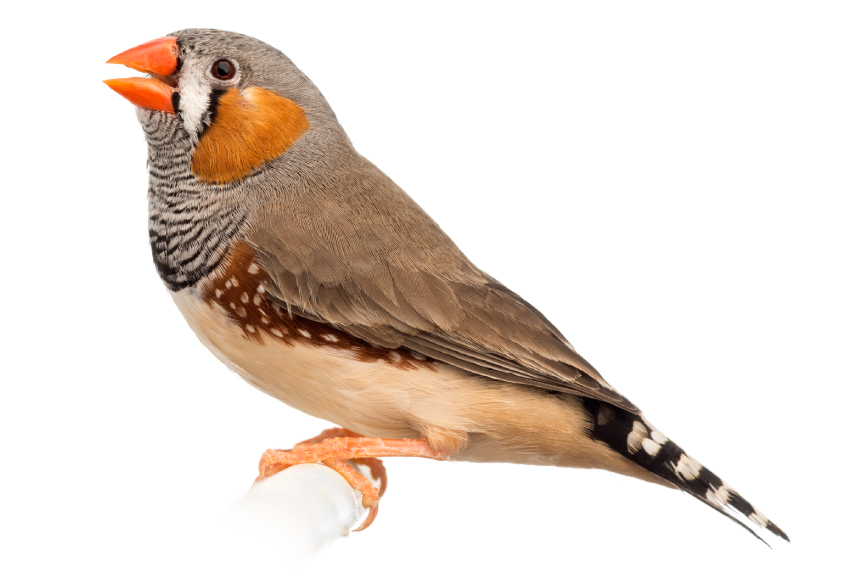
Loss of autism protein stalls song learning in birds
A gene linked to autism and language may be necessary for songbirds’ repertoire.
A gene linked to autism and language may be necessary for songbirds to learn their repertoire. The unpublished findings were presented yesterday at the 2016 Society for Neuroscience annual meeting in San Diego.
In people, the gene, called CNTNAP2, is linked to seizures, intellectual disability, language impairment and, sometimes, autism. Mice lacking CNTNAP2 emit fewer squeaks and grunts than controls do. But these vocalizations are not learned and so are a poor proxy for language, says lead researcher Stephanie White, professor of integrative biology and physiology at the University of California, Los Angeles.
Songbirds, by contrast, learn series of vocal syllables that vary in pitch and length by listening to, and mimicking, their parents — much like children learn to speak. “We are big proponents of rodent models for other aspects of autism, but language impairment may be better studied in vocal-learning species,” White says.
In the new study, White’s team turned down production of CNTNAP2 in young male zebra finches in a brain area crucial for language. Unlike their peers, these birds fail to learn their fathers’ songs, sticking instead to riffs of their own.
The results suggest that these birds are good models of the language problems seen in people with autism, White says.
Language boost:
White and her team reported in 2011 that male zebra finches show a boost in CNTNAP2 production around 25 days of age, when they start to learn to sing. This increase occurs in a brain region called the robust nucleus of the arcopallium (RA), which connects learning and motor-related brain regions.
Female zebra finches, which do not learn to sing songs, ramp down CNTNAP2 production at the same age.
In the new work, White’s team introduced a genetic construct into the RA of 25-day-old male zebra finches that prevents production of the CNTNAP2 protein. As they grow up, these finches do a poor job learning their fathers’ songs.
Over time, however, the mutant birds get better at repeating their own, original songs. This suggests that they are capable of producing song, just not of learning it, White says. “They can progress, but they just can’t match it to a tutor.”
The next step, White says, is to look at unlearned vocalizations in these birds. If these are also affected, it would suggest that the gene plays a role in the general motor production of song. If unlearned vocalizations are intact, however, it would lend support to the idea that CNTNAP2 plays a role in social learning, something of direct relevance to autism.
For more reports from the 2016 Society for Neuroscience annual meeting, please click here.
Recommended reading

Too much or too little brain synchrony may underlie autism subtypes

Developmental delay patterns differ with diagnosis; and more

Split gene therapy delivers promise in mice modeling Dravet syndrome
Explore more from The Transmitter

During decision-making, brain shows multiple distinct subtypes of activity

Basic pain research ‘is not working’: Q&A with Steven Prescott and Stéphanie Ratté
